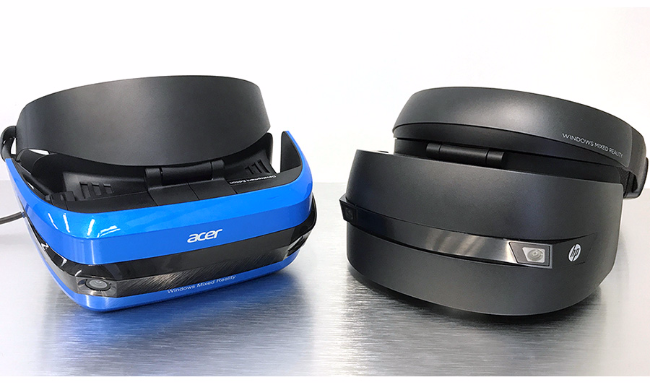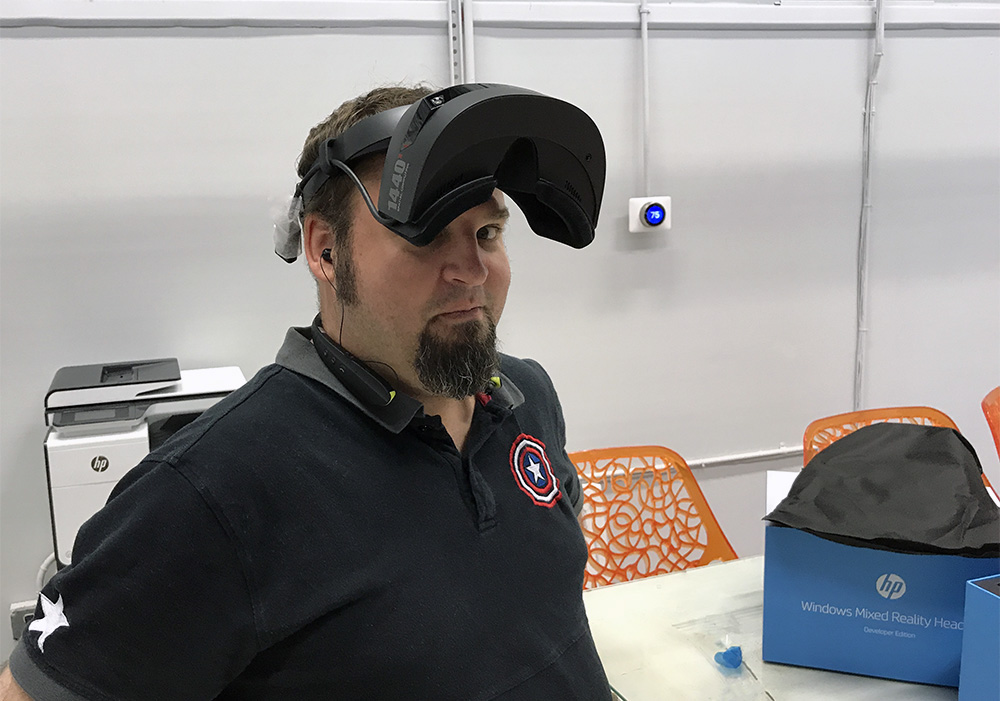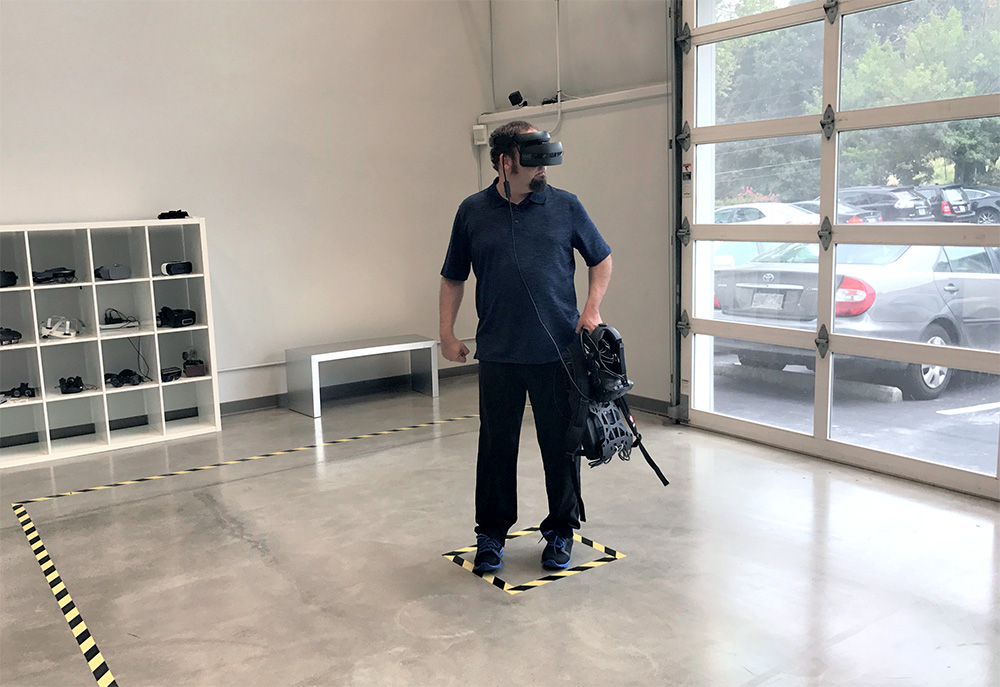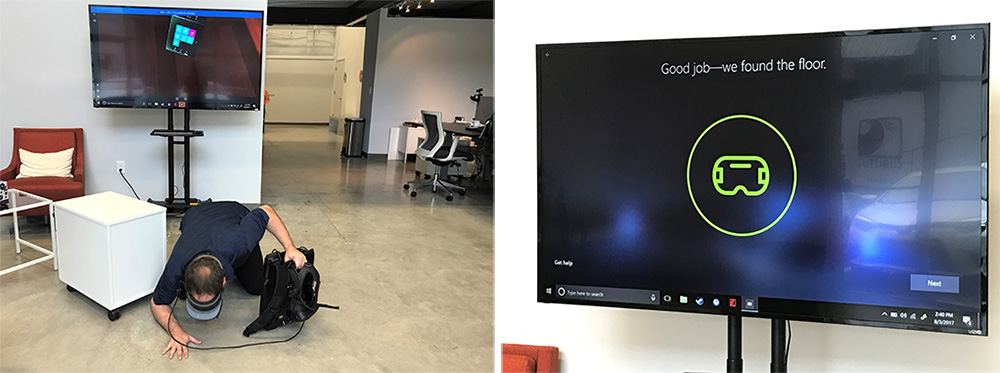
09 Aug Developer’s First Look at the HP and Acer Windows Mixed Reality Headsets
Last week we received two unexpected packages, the HP and Acer Immersion VR Development Kits. We opened up the packages as soon as they arrived and got to work.

What’s in the box
Aesthetically the headsets have a couple of minor differences. The HP is all black and has a knob to adjust the head strap width, whereas the Acer has blue accents and a cheaper but reliable adjustable head strap.

This is the first time I’ve seen a front hinged display on a modern headset. Initially, this was welcome but in practice, it becomes obvious that it’s unlikely to be useful. The weight of the headset is just too much to flip up and stay there. It dips back down into your eyes, meaning taking it off is the only way to go if you want to see the physical world in front of you for longer than a couple of seconds.

The two headsets are identical on a technical level. You can view the full specs of the HP headset here and the Acer headset here.
Putting the headsets to use
The HP Mixed Reality Development Kit arrived first so it’s the one we’ve done the most testing with. The big question with this system was room scale. I wanted to know how well it could track without any outside assistance. To test this, I wired it into our backtop computer and walked around the room.

We usually use this system with the HTC Vive. Because of the way the Vive is secured to the backtop it was easier to carry it around during these tests than completely remove it.
It was worth the effort to set the system up to the backtop because these new headsets track surprisingly well! I was able to walk around the room well outside the boundaries of any other system. I was even able to jog from wall to wall with no drifting. I got a little confused when I was directly in front of a desk, but in an open area, it was excellent.
The only part we had trouble with was detecting the floor. It always seemed to be a foot or more higher than it should be. This could just be user error, but it was a consistent problem with both headsets.

It’s worth mentioning that the system has a chaperone grid, but it was mostly ignored for these initial tests.
On the software side, there’s not much to speak of at this point. Setup is straightforward, but it did require several updates to the Windows 10 OS. This should get easier as official updates from Microsoft roll out next year. For now, know that developer mode is solid, but beta software is required if you want to use it today.
The Windows MR headset is meant to be an extension of the HoloLens, and it shares a lot of its development. We’re still in the process of converting some of our internal projects over to it, but with no controllers available it might be a while until we have a working prototype. When we do, we will post an example of it on our YouTube page.
It’s too early to say for sure, but the Microsoft’s Mixed Reality system is promising. Assuming that controllers become available and track as well as the headset there’s a good chance we’ll be using it quite often.




